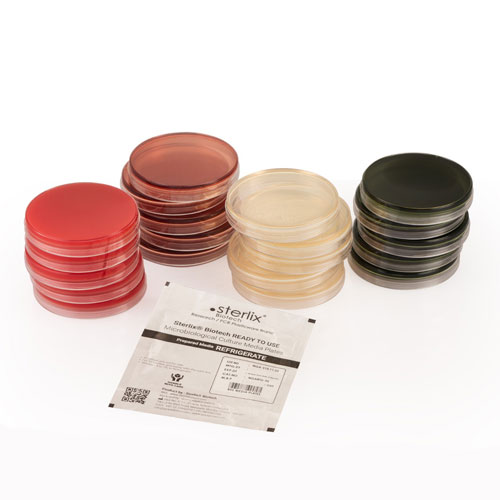Product Details
Columbia Blood Agar (CBA) plate is a versatile and commonly used culture medium in microbiology laboratories for the isolation and cultivation of a wide range of microorganisms, including bacteria and fungi. It is a nutrient-rich agar medium supplemented with sheep or horse blood, providing essential growth factors and promoting the growth of a variety of microorganisms.
The composition of Columbia Blood Agar plate typically includes the following components:
Columbia Agar Base: Columbia agar base provides a nutritious foundation for the growth of microorganisms. It contains enzymatic digests of proteins, peptones, and other nutrients that support bacterial and fungal growth.
Sheep Blood: Sheep blood is added to the agar medium to provide additional nutrients, such as vitamins, minerals, and growth factors, that facilitate the growth of various microorganisms. The blood also serves as a differential component for detecting hemolytic activity.
Agar: Agar is a polysaccharide derived from marine algae. It is added to the medium as a solidifying agent, providing a solid surface for microbial colony formation.
Columbia Blood Agar plates have several uses in microbiology, including:
General Culturing: Columbia Blood Agar supports the growth of a wide range of bacteria, making it suitable for routine cultivation and maintenance of laboratory cultures.
Hemolysis Differentiation: The addition of blood to the agar allows for the detection and differentiation of hemolytic activity. Hemolysis refers to the breakdown of red blood cells, and it can be classified into three types:
Alpha-hemolysis: Partial hemolysis results in a greenish discoloration around bacterial colonies.
Beta-hemolysis: Complete hemolysis results in a clear zone around bacterial colonies.
Gamma-hemolysis: No hemolysis occurs, and there is no change in the appearance of the blood agar.
By observing the patterns of hemolysis, it is possible to differentiate microorganisms based on their hemolytic characteristics.
Columbia Blood Agar plates are commonly used in various clinical, research, and educational settings for the isolation and identification of microorganisms. They provide a nutrient-rich environment and allow for the observation of specific colony characteristics, such as size, shape, color, and hemolysis, which aid in the identification and characterization of different microbial species.
The composition of Columbia Blood Agar plate typically includes the following components:
Columbia Agar Base: Columbia agar base provides a nutritious foundation for the growth of microorganisms. It contains enzymatic digests of proteins, peptones, and other nutrients that support bacterial and fungal growth.
Sheep Blood: Sheep blood is added to the agar medium to provide additional nutrients, such as vitamins, minerals, and growth factors, that facilitate the growth of various microorganisms. The blood also serves as a differential component for detecting hemolytic activity.
Agar: Agar is a polysaccharide derived from marine algae. It is added to the medium as a solidifying agent, providing a solid surface for microbial colony formation.
Columbia Blood Agar plates have several uses in microbiology, including:
General Culturing: Columbia Blood Agar supports the growth of a wide range of bacteria, making it suitable for routine cultivation and maintenance of laboratory cultures.
Hemolysis Differentiation: The addition of blood to the agar allows for the detection and differentiation of hemolytic activity. Hemolysis refers to the breakdown of red blood cells, and it can be classified into three types:
Alpha-hemolysis: Partial hemolysis results in a greenish discoloration around bacterial colonies.
Beta-hemolysis: Complete hemolysis results in a clear zone around bacterial colonies.
Gamma-hemolysis: No hemolysis occurs, and there is no change in the appearance of the blood agar.
By observing the patterns of hemolysis, it is possible to differentiate microorganisms based on their hemolytic characteristics.
Columbia Blood Agar plates are commonly used in various clinical, research, and educational settings for the isolation and identification of microorganisms. They provide a nutrient-rich environment and allow for the observation of specific colony characteristics, such as size, shape, color, and hemolysis, which aid in the identification and characterization of different microbial species.


